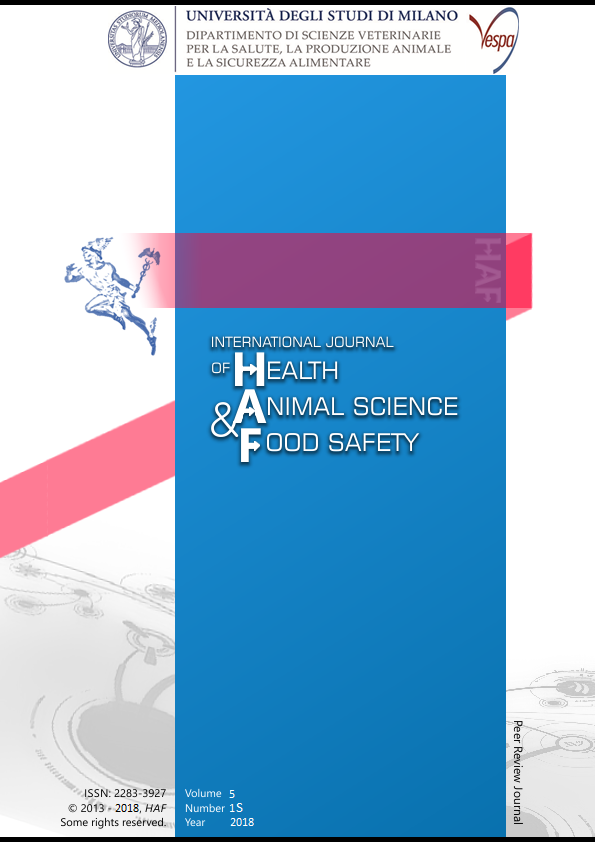Abstract
The intranasal (IN) route shows promise for chemical restraint given the large area offered for drugs absorption. The nasal turbinates increase nasal mucosa surface, which have a greater blood flow than muscle, brain and liver tissue . Aim of the study is to compare the clinical effects and sedation scores following either IN or intramuscular (IM) administration of dexmedetomidine-methadone in dogs. Twenty mixed-breed, client-owned, healthy dogs, undergoing soft tissue surgery or diagnostic procedures, were randomly allocated in two groups (n = 10) to receive dexmedetomidine (0.01 mg kg-1) together with methadone (0.4 mg kg-1) IN (IN-group) or IM (IM-group). Temperament was evaluated before premedication (1 = calm and friendly, 4 = very excitable or nervous) (Maddern et al. 2010). Heart rate (HR), respiratory frequency (fR), body temperature, and side effects were recorded before (T0) and 10 (T10), 20 (T20) and 30 (T30) minutes after premedication. Sedation was scored 3 times (every 10 minutes) after drugs administration using a descriptive sedation scale (0 = no sedation, 13 = extremely sedated). Induction was performed at T30 with titrate-to-effect propofol and the dosage was recorded. Student T-test was performed. Weight, age, temperament, body temperature and propofol dose were not different between groups. At each time point, excluding T0, IM-group showed a statistically lower HR and fRcompared to IN-group. No undesirable effects were observed in both groups. Sedation score in IM-group was significantlyhigher compared to IN-group at each time point. In conclusion, despite statistical differences, IN administration produces a satisfactory clinical sedation with more gradual hemodynamic effects compared to IM injection; this is probably due to a direct transport of drugs from cranial nerves (I-V) to brain with limited systemic absorption. However, the high variability recorded in sedation score between subjects in IN-group (min 1/13; max 13/13 at T30) probably arises from a variable drugs conveyance from nasal mucosae to target cell in CNS by IN administration.
Riferimenti bibliografici
Dale O, Hjortkaer R, Kharasch ED, 2002. Nasal administration of opioids for pain management in adults. Acta Anaesthesiol Scand 46, 759-770
Gurney M, Cripps P, Mosing M, 2009. Subcutaneous preanesthetic medication with acepromazine-buprenorphine is effective as and less painful than the intramuscular route. J Small Anim Pract 50, 474-477
Maddern K, Adamns VJ, Hill NA, Leece EA, 2010. Alfaxalone induction dose following administration of medetomidine and butorphanol in the dog. Vet anaeth Analg 37, 7-13
This work is licensed under a CC BY-SA 4.0 international

